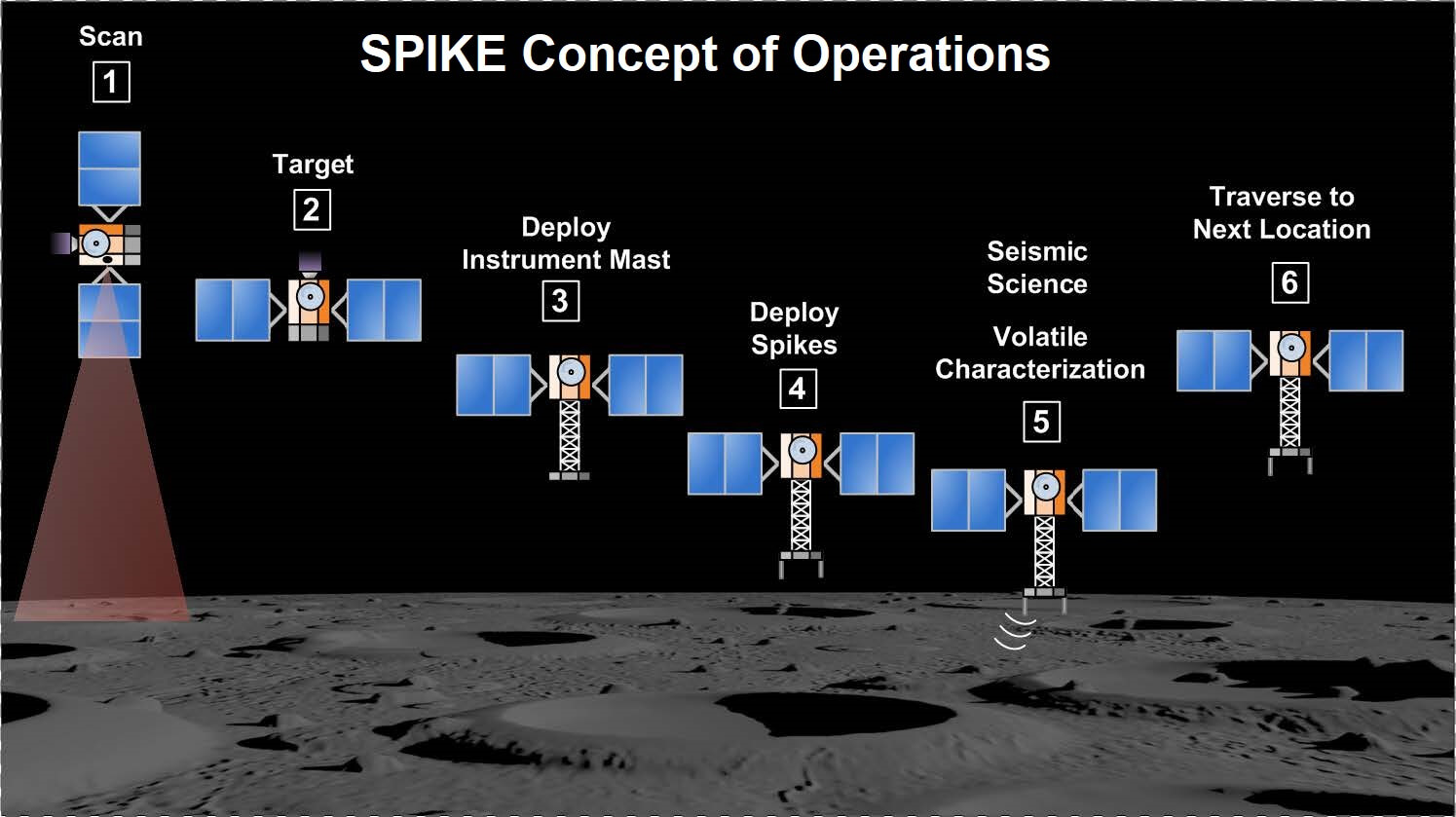Current methods of asteroid exploration depend on ground-based observation followed by launching of a spacecraft that gets into orbit, perform mapping followed by touch-and-go sample return. More needs to be done to sample the diverse composition of a typical asteroid. Surface exploration of asteroids and comets remains a daunting challenge due to their milli-gravity environment and unexplored surface physics. Practical questions include: What happens to low gravity regolith during landing, mining or excavation? Does it go into orbit? Does it adhere to spacesuit material instead of settling? Can a spacecraft be anchored to embedded rocks, or will they pull free? Are landforms stable, or will exploration and mining activities disturb them catastrophically?
Spacecraft Penetrator for Increasing Knowledge of NEOs (SPIKE) is a subsurface-probing asteroid lander in the form of a deep space solar electric propulsion orbiter. It does science that has never been planned at an asteroid: seismology, and subsurface mapping of volatiles and organics. Using penetrators at the end of a three-meter boom, the spacecraft is kept at safe distance while providing ample power. The payload acquires data from 0.3–1 meter depth in a variety of locations, building up a detailed understanding of volatile and organic composition and mechanical structure, essential to planetary science, hazardous asteroid mitigation, and in situ resource assessment. Designed for small NEOs where SEP thrust exceeds gravity, SPIKE detaches mechanically, attains new orbit, and lands again, without requiring a chemical propulsion system, and heads to a second asteroid. SPIKE can be flown as a single low-cost mission, or several can be launched together to conduct in situ science at 5–10 asteroids.

